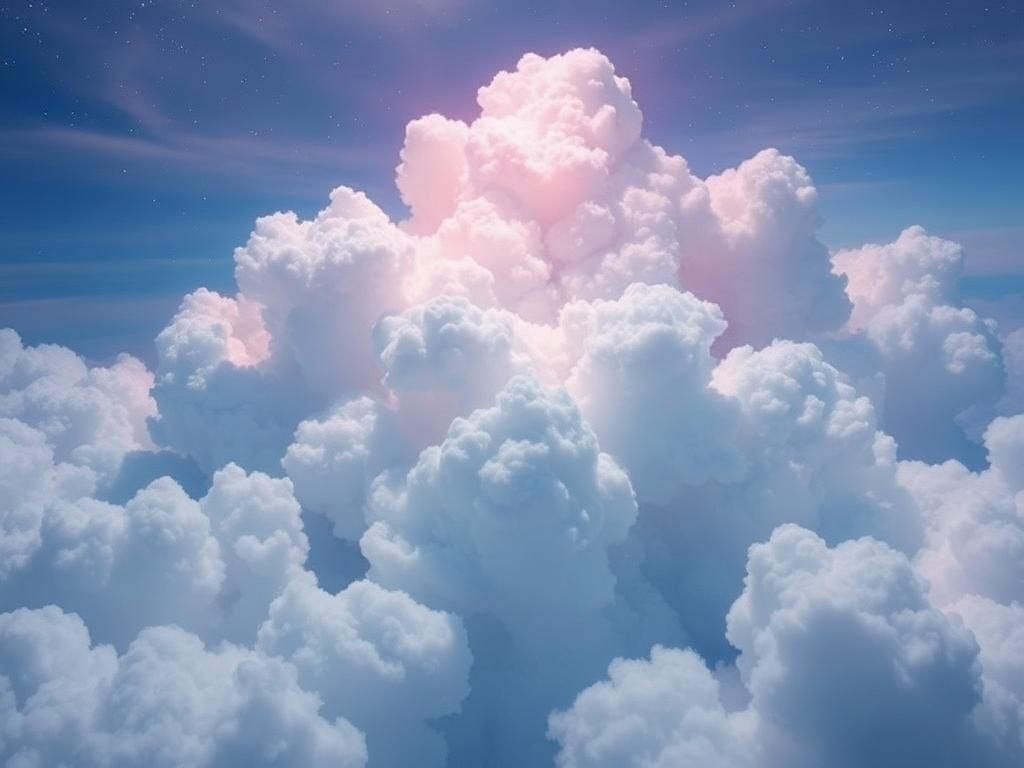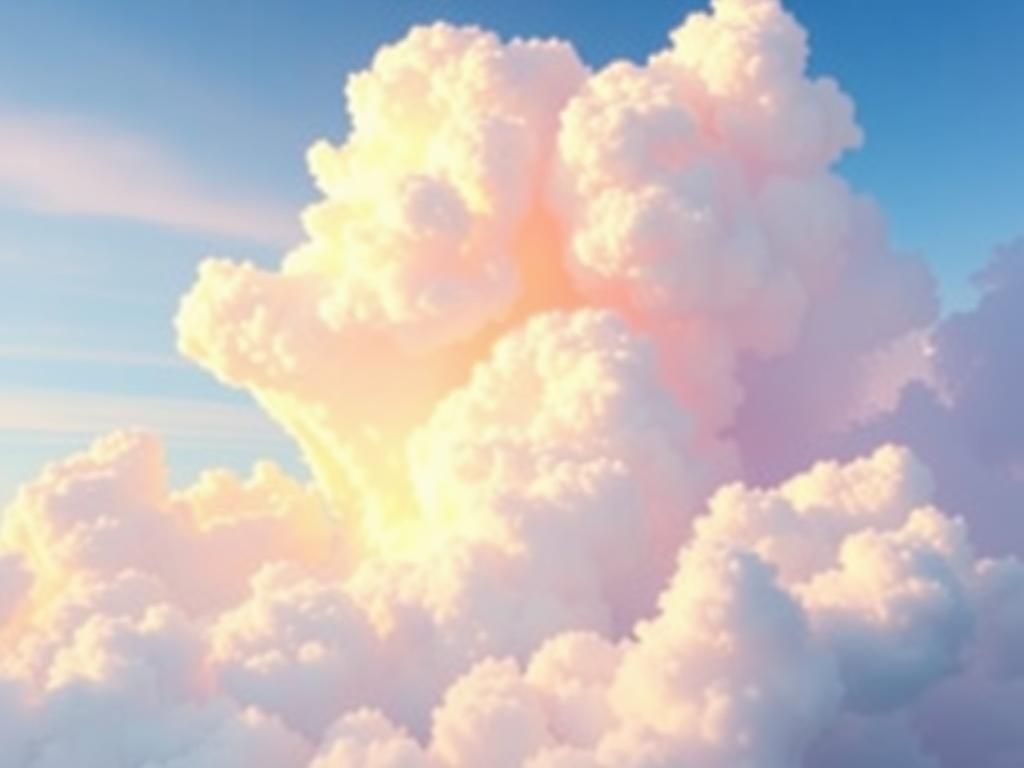The concept of dream clouds captures our imagination and creativity, representing a unique intersection between the mystical nature of dreams and the symbolism of clouds. These ethereal formations have long been the subject of artistic expression and psychological exploration, as well as offering a canvas onto which we project our fears, desires, and subconscious thoughts. This article delves into the various dimensions of dream clouds, revealing their cultural significance, psychological interpretations, artistic representations, and more.
Introduction to Dream Clouds
Definition of Dream Clouds
The term dream clouds refers to the imagery of clouds that appears within our dreams. While these clouds can be understood literally as part of the dream landscape, they often embody metaphorical meanings that stretch beyond mere visual elements. For instance, clouds might represent emotions, life challenges, or even the obscured aspects of the psyche.
Significance in Cultural Contexts
Across various cultures, dream clouds have been depicted in numerous forms, capturing the imaginations of artists, writers, and dreamers alike. From ancient folklore to modern literature, clouds symbolize a plethora of themes such as transcendence, uncertainty, and emotional turbulence. In art and literature, clouds can signify both inspiration and despair, echoing the duality inherent in human experience. The mystical allure of dream clouds often reflects our quest for understanding dreams’ relationship to our waking lives.
The Science Behind Dream Clouds
Psychological Interpretation of Dream Clouds
Understanding the dream clouds requires delving into psychological interpretation. Theories of dream analysis, such as those by Sigmund Freud and Carl Jung, provide frameworks for interpreting these dream symbols. Freud suggested that dreams express repressed desires and feelings, while Jung posited that they represent a collective unconscious, rich with archetypal imagery. In this context, clouds often indicate emotional states—whether they be buoyant or heavy, uplifting or stifling.
Neurophysiology of Dreaming
The science of dreaming primarily points to stages of sleep known as REM (rapid eye movement) sleep, when most vivid dreams—including visions of dream clouds—take place. During REM, the brain is highly active, creating complex narratives and emotionally charged imagery. The neurophysiological processes behind this dream state reveal the intricate functions of memory, emotion, and the subconscious mind.
Symbolism of Clouds in Dreams
Common Cloud Types in Dreams
In dream interpretation, the type of clouds one encounters can significantly alter the dream’s meaning. Here are some common representations:
- Cumulus Clouds: Often symbolize happiness, joy, and a carefree attitude. Dreaming of fluffy, white cumulus clouds can suggest feelings of hope and positivity.
- Stratus Clouds: Represent confusion, melancholy, or stagnation. These low-hanging clouds appear dense and heavy, offering insight into feelings of being weighed down.
- Thunderstorms: Indicate inner turmoil, anxiety, or conflict. The violent, chaotic nature of thunderstorms in dreams often signals unresolved issues or emotional distress.
Personal Associations and Variability
It’s crucial to note that personal experiences greatly influence how dream clouds are interpreted. Context and emotions associated with cloud imagery in one’s dreams can shift meanings dramatically. For example, a storm cloud might indicate a source of anxiety for one person while representing renewal and cleansing for another. Keeping these differences in mind is vital for understanding the deeper imagery of dreams.
Artistic Representations of Dream Clouds
Dream Clouds in Visual Art
Throughout art history, numerous artists have portrayed dream clouds in their works, using them as metaphors for inspiration, change, or turmoil. From the Baroque skies painted by Claude Lorrain to the surreal landscapes of Salvador Dalí, clouds have served as vehicles for deep emotional and philosophical explorations. Each brushstroke enhances the ethereal quality of these dreamlike realms, allowing viewers to engage with the complex interplay between reality and imagination.

Dream Clouds in Literature and Poetry
Cloud imagery frequently appears in poetry and prose to convey emotions and themes related to the human experience. Writers often utilize clouds to symbolize fleeting thoughts, emotional struggles, and the passage of time. Poets like William Wordsworth and Emily Dickinson employed cloud imagery to evoke feelings of isolation, beauty, and reflection, leaving readers with resonant visions and emotional depth.
Practical Guide to Understanding Your Dream Clouds
Keeping a Dream Journal
Maintaining a dream journal is beneficial for those eager to explore their own dream clouds. Here are some practical tips for effective journaling:
- Write immediately upon waking to capture fleeting memories.
- Note specific details such as feelings, colors, types of clouds, and situations.
- Use descriptive language to create a vivid picture of your dreams.
Steps to Analyze Your Dreams
To understand the meaning behind your dream clouds, ask yourself the following questions:
- What emotions did I feel during the dream?
- What specific images stood out to me, especially regarding clouds?
- How do my dreams connect to my waking life and current experiences?
By reflecting on these questions, you can forge deeper connections between your dreams and daily realities.
Dream Clouds and Their Influence on Popular Culture
Representation in Films and Television
Dream clouds have made significant appearances in films and television series, shaping how we perceive the dream world. For example, the animated film “Inception” plays heavily with the concept of dreams within dreams, often using cloud imagery to denote shifts in reality. Such representations influence cultural expectations of dreams, encouraging a more mystical and interpretive approach to understanding the significance of our nighttime visions.
Dream Clouds in Music
Music is another medium where dream clouds come alive through lyrical references and thematic elements. Many artists, from classic to contemporary, integrate cloud imagery to evoke emotions—whether it’s the calmness of a clear sky or the turmoil of a storm. Songs like “Clouds” by Joni Mitchell illustrate the emotional resonance that cloud imagery can carry, allowing listeners to connect deeply with personal experiences and memories.
Conclusion
Recap of Key Points
Throughout this exploration, we have uncovered the intricate tapestry of dream clouds—ranging from their cultural significance to psychological interpretations and artistic representations. Understanding these elements allows us to appreciate the subjective nature of dream interpretation, emphasizing that the same clouds may evoke different meanings for different individuals.
Encouragement for Readers
We invite readers to delve into their own dream clouds and engage with various forms of art and literature to unearth the rich imagery within their subconscious. By doing so, one can find a sense of connection between their dreams and the broader fabric of human experience.

Additional Resources
Suggested Books and Articles
- The Ultimate Dream Book – A comprehensive guide on dream analysis and interpretation.
- Understanding Dreams – An article from Psychology Today discussing the complexities of dream analysis.
Online Communities and Forums
Connecting with others interested in dream clouds can enhance your understanding and interpretation of dreams. Consider exploring the following platforms:
- Reddit’s Dreams community for shared experiences and interpretations.
- Dream Forum’s dedicated space for dream analysis and discussions.
| Cloud Type | Symbolism | Emotional Associations |
|---|---|---|
| Cumulus Clouds | Happiness | Joy, contentment |
| Stratus Clouds | Melancholy | Sadness, confusion |
| Thunderstorms | Turmoil | Anxiety, fear |
Frequently Asked Questions (FAQ)
1. What do dream clouds generally symbolize?
Dream clouds often symbolize emotional states, ranging from joy and hope to confusion and anxiety.
2. How can I effectively interpret my dream clouds?
Keep a dream journal, reflect on your emotions during the dream, and consider the context and imagery that stood out to you.
3. Are there different types of clouds in dreams?
Yes, common types include cumulus clouds, stratus clouds, and thunderstorms, each with distinct meanings.
4. What role does sleep play in dreaming?
Most vivid dreams occur during REM sleep, where the brain is highly active and creates elaborate imagery.
5. How can I connect my dreams to my waking life?
Consider how the emotions and situations present in your dreams relate to your current challenges or experiences in waking life.
6. Is there a community for discussing dreams?
Yes, online platforms like Reddit and specialized dream forums provide spaces to connect with others interested in dream analysis.
